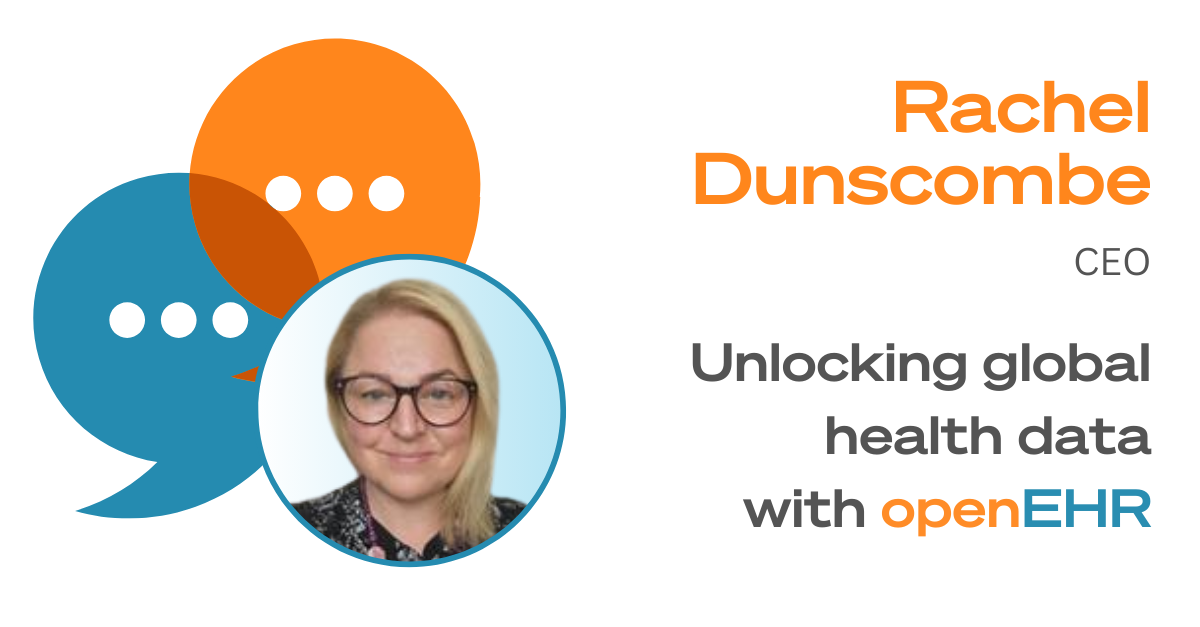Across the globe, healthcare systems aspire to deliver seamless, person-centric care and accelerate life-saving research. It’s a noble, shared vision. Yet, despite remarkable technological progress, we often find ourselves wrestling with a fundamental barrier: our inability to consistently access and share vital health information across systems, borders, and time. Critical data remains frustratingly trapped within application silos – held hostage by the software, if you will – hindering care continuity, obstructing international collaboration, and preventing nations and individuals from exercising true sovereignty over their health information. To break these digital shackles and realise a truly global vision for connected health, we must embrace a fundamental architectural shift, enabled by mature, international open specifications like openEHR.
The core challenge is universal, a shared headache for healthcare leaders worldwide. Historically, health information systems have tightly coupled data storage with specific applications. This legacy approach creates immense friction – vendor lock-in we wouldn’t accept in other industry sectors, costly integration projects that make eyes water, and an inability to build that somewhat elusive comprehensive, lifelong health record. More critically, it obscures ownership and control, leaving valuable national and personal data assets managed according to vendor priorities rather than citizen or national interests. In an era demanding greater data portability, citizen empowerment (as exemplified by regulations like GDPR), and international cooperation on health challenges, this application-centric model simply doesn’t cut it anymore.
Deep semantic interoperability
The necessary evolution is towards a data-centric architecture where clinical information is separated from the applications used to view and manage it. openEHR provides the robust, internationally developed, open specifications to achieve exactly this. It is not just another standard; it is a comprehensive framework designed for persistent, lifelong clinical data repositories. Through its unique multi-level modelling approach, using clinically defined ‘archetypes’ and ‘templates’, openEHR ensures deep semantic interoperability. This isn’t just about systems talking; it’s about them understanding each other, ensuring data retains its precise meaning across different systems, languages, and contexts. This guarantees that clinical information recorded today remains computable and meaningful for decades to come, independent of any specific software vendor or technology cycle – data built to last, not just for the lifespan of the current software contract.
This architectural separation is fundamental to achieving genuine data sovereignty on a global scale. By defining data based on open, vendor-neutral specifications, openEHR empowers nations and regions to build health data infrastructure that aligns with their specific governance requirements and data protection regulations. Whether in Europe navigating EHDS, Australia defining core data standards, or nations across the Nordics scaling regional platforms, openEHR provides a common foundation that respects local control while enabling secure, meaningful data use. It ensures that the ultimate custodianship of health data rests with the relevant public bodies and the citizens they serve.
“you are what you eat”
openEHR is the key enabler for the lifelong, person-centric health record. When data is structured, semantically consistent, and persists independently, it becomes possible to build that truly comprehensive view of an individual’s health journey. This longitudinal perspective is invaluable for improving clinical decision-making and ensuring safer care transitions. It also unlocks immense potential for research and innovation, providing the standardised, high-quality data needed for real-world evidence studies and, crucially, for powering reliable Artificial Intelligence. We all know the old adage “you are what you eat” – AI trained on fragmented, inconsistent data will inevitably produce unreliable and unhealthy results. openEHR’s semantically rich, structured data provides the clean, trustworthy foundation AI needs, requiring less torturous pre-processing and enabling more accurate, ethical, and impactful applications in diagnostics, prediction, and personalised medicine globally.
The growing international openEHR community and diverse implementations – across the UK, Nordics, Netherlands, Germany, Australia and beyond – demonstrate the maturity and adaptability of this approach. This global collaboration fosters shared clinical models, best practices, and innovation – a collective effort proving that achieving genuine interoperability might be slightly easier than herding cats, after all.
The path towards truly interoperable, sovereign health data ecosystems requires strategic vision, investment, and collaboration. However, the architectural principles and detailed specifications offered by openEHR provide a proven, internationally validated foundation. By committing to data platforms built on openEHR, the global healthcare community can finally unlock the immense value residing within our health data, empowering citizens, enabling smarter healthcare through AI, and building a healthier future for all.

Leave a Reply